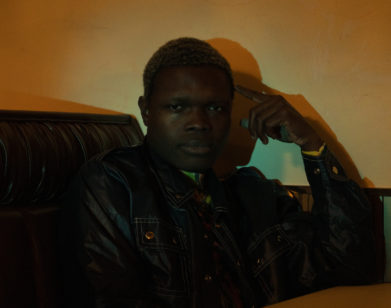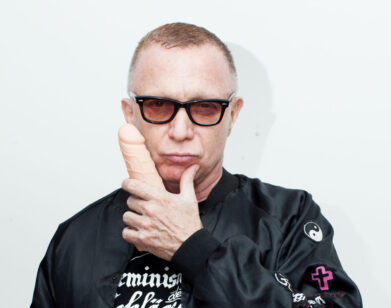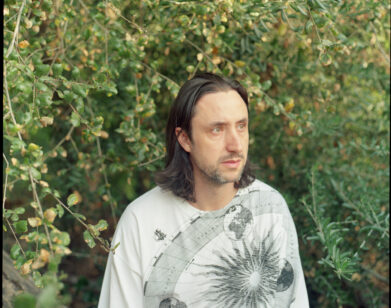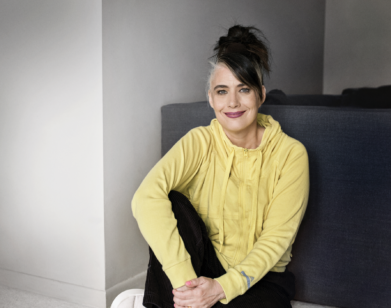IN CONVERSATION
“My Career Is Down the Drain”: Bjarne Melgaard, in Conversation With Nicole Eisenman
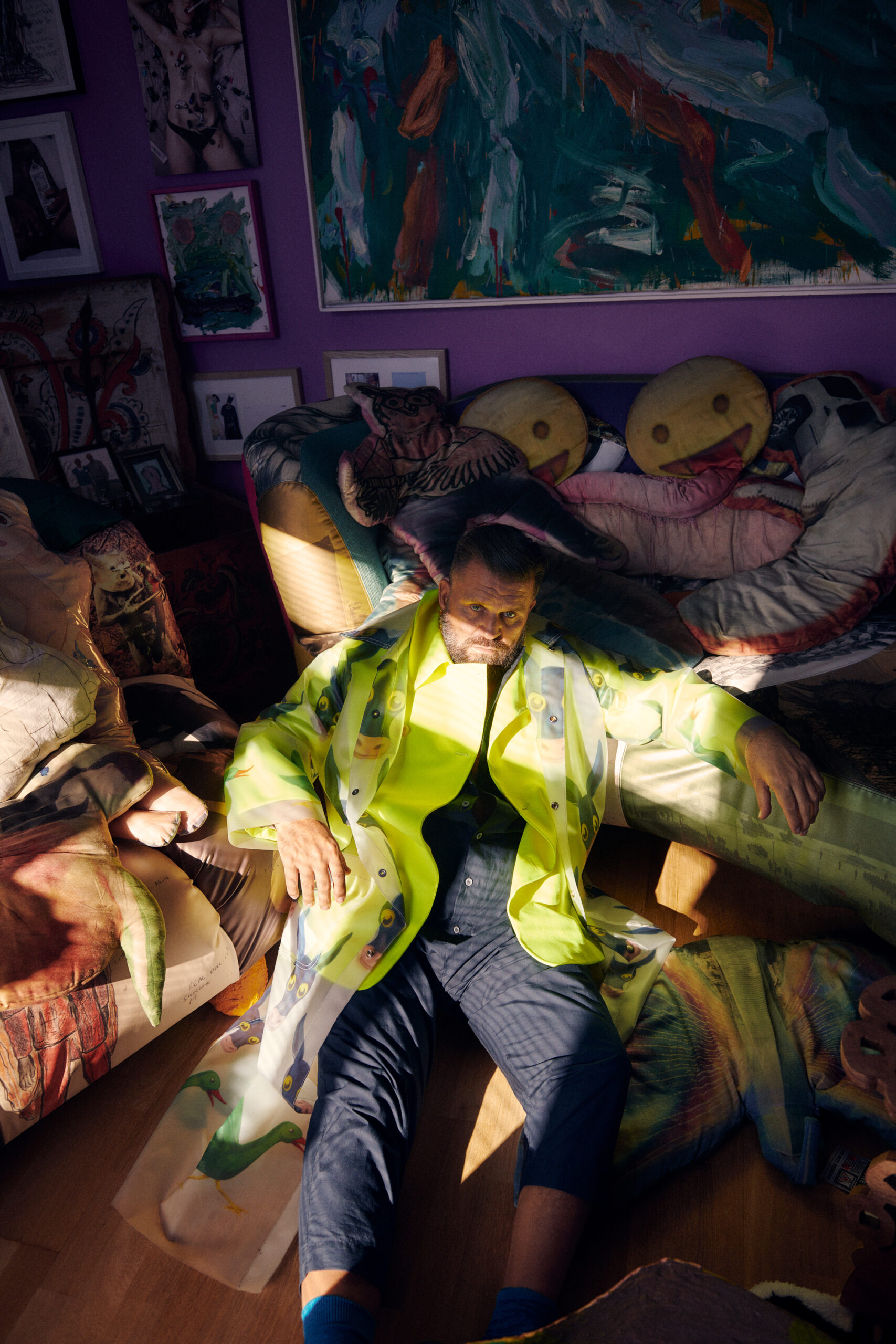
Bjarne Melgaard, photographed by Ivar Kvaal.
“All my work is really personal,” says Nicole Eisenman. “Even the paintings that seem to be political allegories are actually personal allegories first.” It tracked, then, that when the artist, whose works are currently part of a survey spanning three decades of her career at the Museum of Contemporary Art in Chicago, got together with Norwegian shock-jock Bjarne Melgaard last week, it wasn’t long before the pair were talking about ladyboys and crystal meth. Back on the East Coast, Melgaard’s large-scale canvases, mostly produced in Bangkok, are currently on view in Barney Does It All at Faurschou New York. The 56-year-old is happy to be out of his native Norway, where he’s embroiled in what he calls the country’s “biggest art scandal ever.” As he and Eisenman unveil new work to the public, they got on a call to talk about sex tourism in Bangkok, signing contracts on crystal, and why their fisting days are over.
———
NICOLE EISENMAN: You just got back from Bangkok. What’s going on there?
BJARNE MELGAARD: I produce all my work in Bangkok. I work with a huge bronze foundry. I’m going to move there.
EISENMAN: Really?
MELGAARD: Yes. Also, I want to go to Kathmandu to make this movie about these child goddesses.
EISENMAN: Wow. What do you do at night there?
MELGAARD: We go out.
EISENMAN: Are there gay clubs?
MELGAARD: Tons.
EISENMAN: Wow, that’s cool. Are there a lot of expats there or is it all Bangkokians?
MELGAARD: It’s a mix. It’s a lot of ladyboys.
EISENMAN: Ladyboys?
MELGAARD: Yeah.
EISENMAN: Is it true that children go to bars there?
MELGAARD: No. There’s a side to Bangkok that has sex tourism that I’m really not interested in. I’m actually doing a lot of shows in Asia. I’m opening a big show in Seoul in September and I’m working on different projects, like producing my own perfume line. And I want to make a makeup collection for men’s skin. I have all these factories in Thailand that I’m collaborating with. I don’t want my income to be solely from making art because it’s a nightmare.
EISENMAN: Yeah. How’s your career going?
MELGAARD: My career is down the drain because I’m involved in Norway’s biggest art scandal ever. I’ve been scammed for $150 million. The whole autumn, I’ve been portrayed in the media as the biggest drugged out, money-hungry whore ever to exist in Scandinavian art.
EISENMAN: [Laughs] Sorry to laugh.
MELGAARD:. You wrote to me that you used to be a heroin addict, right?
EISENMAN: Yeah.
MELGAARD: I was a crystal meth addict and a drug addict for 35 years. During my time in New York, I signed contracts on crystal meth that I can’t even remember–
EISENMAN: Do they make a contract void if you’re on crystal meth?
MELGAARD: Not these guys. I moved back to Norway in 2017, I went bankrupt. The last thousand dollars I had I spent on a bag of meth before I left. I came back to Norway and I had to live on three square meters in my mom’s house.
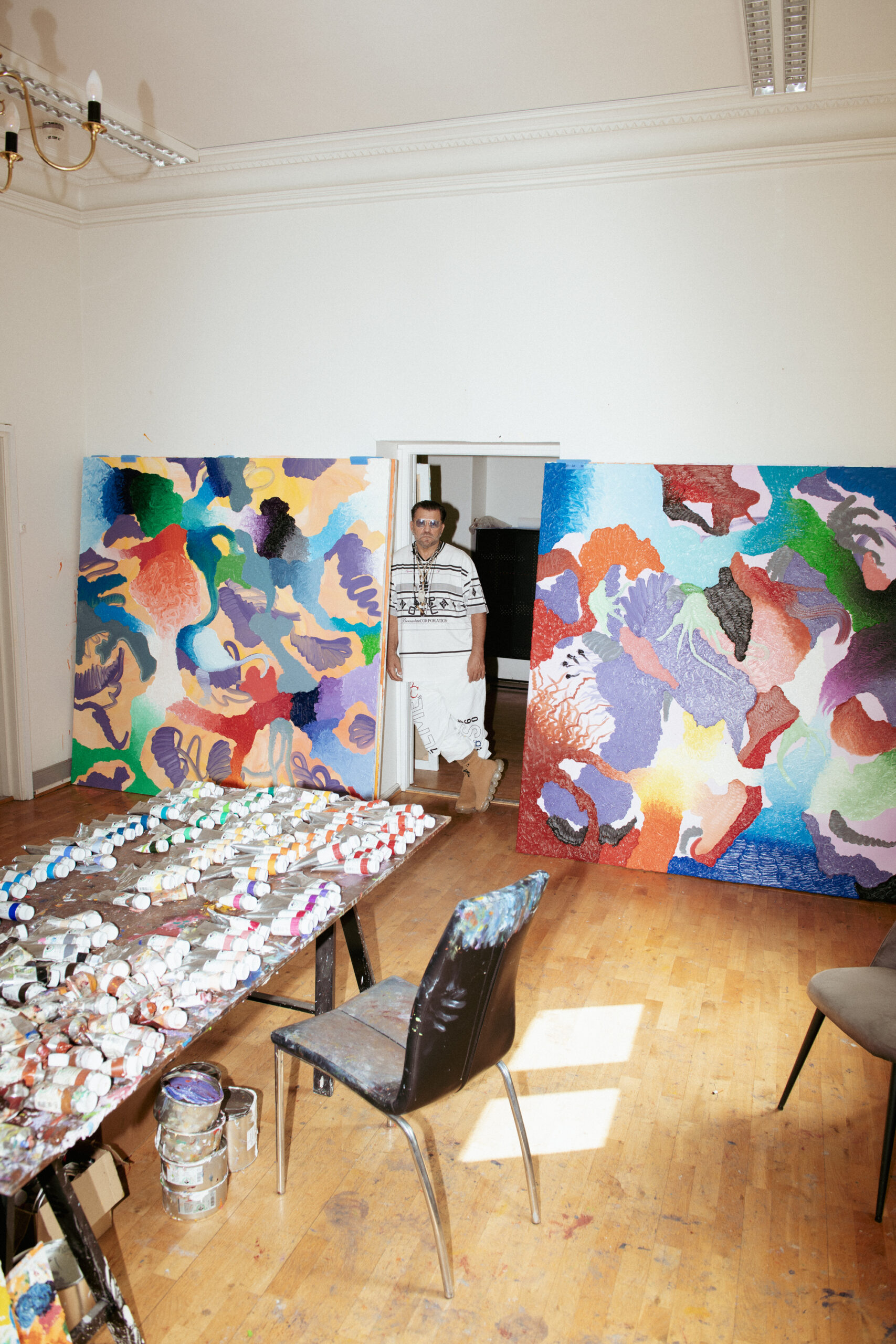
EISENMAN: Oh, Bjarne.
MELGAARD: I was getting involved in a heavy criminal environment doing… I don’t want to say this, but you know what I mean, you know how you make money with drugs, right? And actually I thought it was better than being in the art world.
EISENMAN: Yeah. I never became a criminal to do heroin. I did it for about six years, but I was getting grants from the Guggenheim and the Louis Comfort Tiffany Foundation and those would fuel my habit. Eventually, I went to Betty Ford. I thought it was going to be a country club for rehab. I got that wrong. It was brutal. How did you end up stopping?
MELGAARD: I never had a boyfriend who loved me before Patrice. For the first six years we were together I was using, but he told me, “One day you’ll make it, Bjarne.” He took care of everything while I was getting more and more wasted. I was using so much coke that I was passing out, and I was mixing it with a lot of fentanyl and I was smoking crack. I started reading about ketamine therapy and new psychedelics, then I went to rehab. I started with ketamine therapy and I also did all the 12-step groups. I hate 12-step groups.
EISENMAN: You do?
MELGAARD: Yeah. I used to go to Crystal Meth Anonymous, and it’s basically Grindr for crystal meth users.
EISENMAN: That sounds like the best of both worlds to me. You could get clean and a date at the same time.
MELGAARD: Nobody wanted to date me, so that’s why it wasn’t very fun. They were just like, “Get away, stay away.” I started doing ketamine and slowly, things started to change. My husband said, “Bjarne, we need to get away.” We went to Mykonos and I don’t even remember getting there. But I slept for three days, and when I woke up, the urge to do drugs was gone. I suddenly thought, “I’m married to the most beautiful man in the world, who stayed by my side at the lowest points in my life.” And now I’ve been clean for nine months, and that’s the longest time I’ve been clean for 35 years. I have done most of my shows and installations totally drugged out. For instance, at Luxembourg & Dayan–do you know Alissa Bennett? She’s a writer and a friend of mine. I was so addicted to meth that I got them to close off the fire alarm in the gallery so I could smoke meth in the bathroom while installing the show.
EISENMAN: It’s amazing how people accommodate artists.
MELGAARD: Yeah.
EISENMAN: When I look at your work, it’s very diaristic. It seems like you put your heart and everything into your work. Total chaos. Total transparency. Do you feel understood?
MELGAARD: Well, I do feel also that there’s a formal side to my work. And there are a lot of literary references. Sometimes I feel like people think that I just paint my sex life. But I’m actually quite a shy person, and a lot of my work is actually fictional.
EISENMAN: So you’re a fictive version of yourself? This mass character really parallels your life, but it’s not you?
MELGAARD: It’s both. I also like to keep a part of myself completely separate and private.
EISENMAN: I’m curious about that side, what goes on there? Is it sweet and domestic, are you guys making dinner every night and watching TV shows?
MELGAARD: We do both things. In Bangkok, we have been producing very pornographic movies and films. I just showed 20 photos in Chicago. LeBlanc phoned me and said, “Guess what sold the most? Your photos.” So basically, what people want to see is me with three black dicks in my mouth.
EISENMAN: What’s wrong with that?
MELGAARD: I have no problems there. But I have a very monogamous relationship with my husband, and in a way that’s probably different from a lot of gay men. After being together with him for seven years, I’m just more attracted. And doing these super pornographic things, it’s more like artworks now. When we were in Bangkok we had a honeymoon, we were so in love so we just stayed in a hotel room or we went to dinner. But this time we went out and we really discovered Bangkok, illegal nightclubs, ladyboy clubs, ping-pong shows, the whole thing.
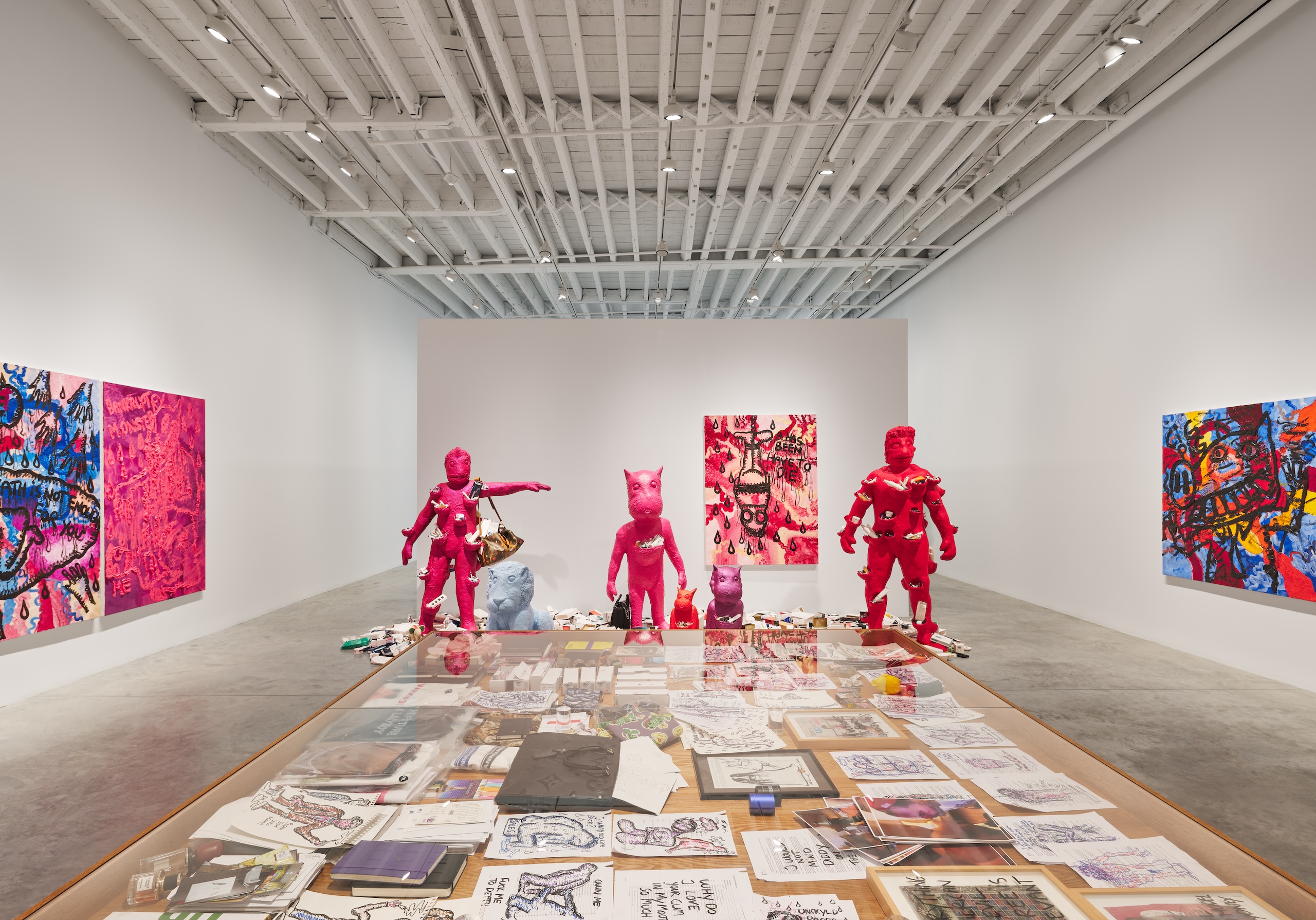
Installation view of Bjarne Melgaard’s ‘Barney Does It All’ at Faurschou New York. Photo by Olympia Shannon © Faurschou.
EISENMAN: What is a ping-pong show?
MELGAARD: That’s where a woman shoots ping-pong balls out of their vagina.
EISENMAN: Oh. Do they actually play a game, are they trying to hit a target?
MELGAARD: You play like ping-pong with it.
EISENMAN: Cool. You’ve talked about sadness and sex, how you’re haunted by it. Does it feel different now that you’re clean?
MELGAARD: Well yes, it does. You know that I’m a kind of lesbian stalker, right? I’m friends with one of your friends, Collier Schorr.
EISENMAN: Oh, I love Collier.
MELGAARD: She came to my show and talked about how she had one big love, and it was the first time she was pursued. That was the same thing with my husband. I did steroids for 12 years to become this gay caricature that a gay man would like. But there was always something wrong. Either I was too drugged out, or I was not cool enough. It was the first time somebody really pursued me, and it was new to me to actually have a partner. None of my boyfriends were in love with me. We met on Grindr, and I was living in my mom’s house in a three square room, totally bankrupt. We met in the basement that I had in the studio. He came in, sat down, and I looked at him and thought, “I want to spend the rest of my life with you.”
EISENMAN: That is very lesbian, isn’t it?
MELGAARD: That’s very lesbian. Do you know this song by Beverly D’Angelo? “Can’t Fuck Without Falling in Love?”
EISENMAN: I don’t think so.
MELGAARD: It’s always been like that. We moved in together after two weeks.
EISENMAN: Do you have any cats?
MELGAARD: No, I don’t like cats. I have a French bulldog that I love.
EISENMAN: Well, that’s one strike against your lesbianism. But it sounds like you read a lot of gay literature and gay theory.
MELGAARD: Well, yeah. When I did the Venice Biennial, I was also working as a professor at the university. So I was reading a lot of queer theory. I still think the book that was most influential for me was Don Juan in the Village [by Jane DeLynn].
EISENMAN: What is that one?
MELGAARD: It’s about her cruising bars and looking for butch women. And about her getting fisted at a party in the room, she hasn’t realized that all the people at the party have been listening in.
EISENMAN: Lesbians were obsessed with fisting in the late 90s and early aughts. I wonder if they still are.
MELGAARD: But how is the state of lesbian fisting now?
EISENMAN: There’s no way to know, is there?
MELGAARD: Have you ever been into it?
EISENMAN: I tried it once with a girlfriend back in the day. I have really big hands, so it didn’t work. If sex takes hours of work, it stops being fun.
MELGAARD: When I lived in Brussels, I was heavily involved in the dark S&M scene. So I also have really big hands–
EISENMAN: Are you an S or an M, a top or a bottom?
MELGAARD: I’m everything. But fisting is the most boring sex ever. Not only does it take hours, but first it’s like one fist, right? And then it’s like, can you do two? Suddenly, four hours are gone and you just want to have a drink and a cigarette. Do you know what I mean?
EISENMAN: Yeah. And you want your hands back. I did try S&M in the 90s and it didn’t really work for me because I was a sub and my person was always asking me to clean her room. I was like, what the hell’s actually going on here?
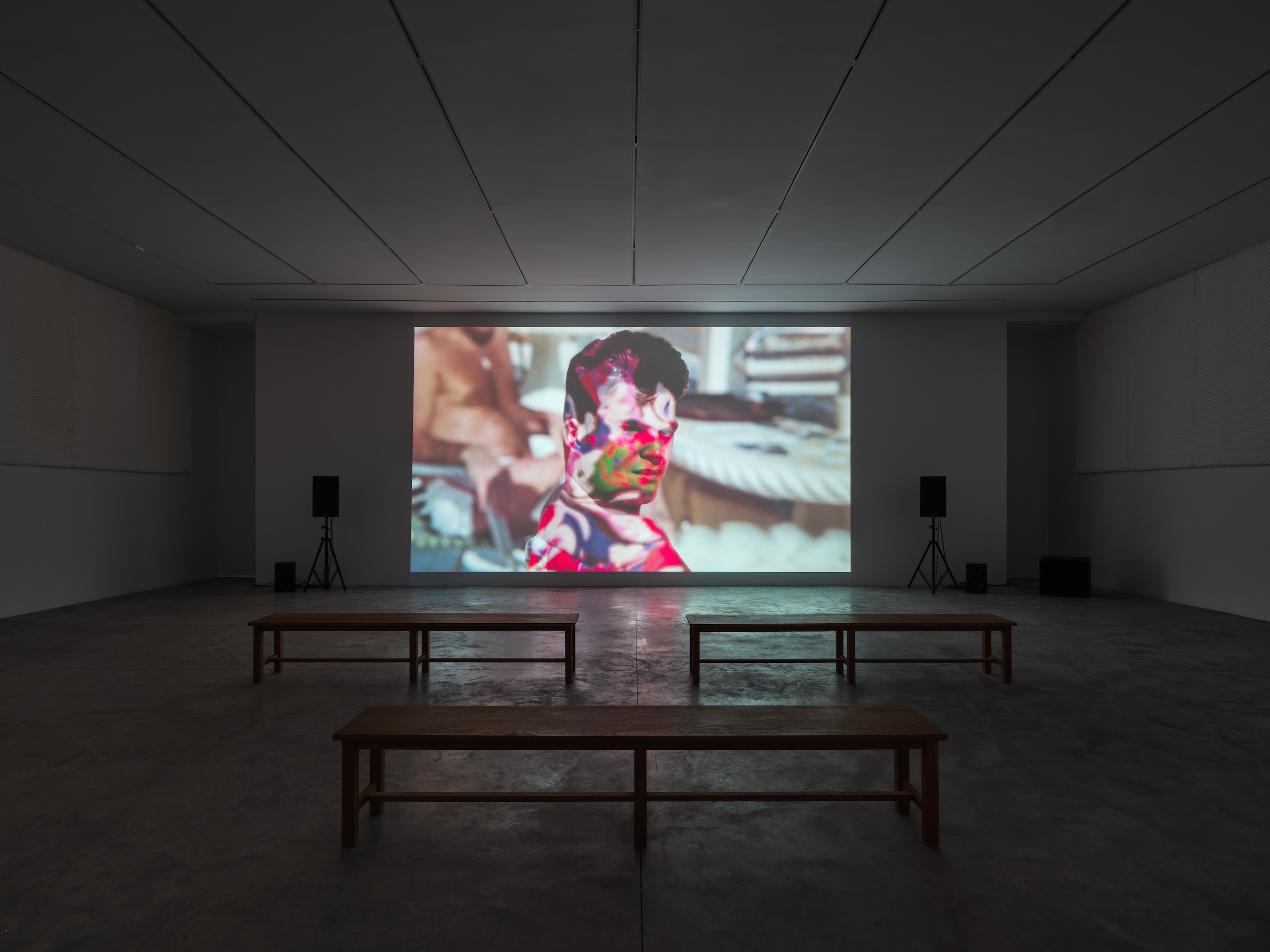
Installation view of Bjarne Melgaard’s ‘Barney Does It All’ at Faurschou New York. Photo by Olympia Shannon © Faurschou.
MELGAARD: I had partners where I was the master and they were the slave, but it just was a complete slob.
EISENMAN: Wait, your slave was a slob?
MELGAARD: At that time, I had so much anger towards gay men. For instance, I beat up a guy so badly that he had to go to hospital because I resented so much this caricature of sexuality that gay men have.
EISENMAN: Were you pissed off because you weren’t able to fit the mold?
MELGAARD: Yeah. I was also working with all the Norwegian black metal bands who are basically the most homophobic. I’m the only artist in post-war Europe who had my show shut down by the German state.
EISENMAN: Why did they shut it down?
MELGAARD: Because they said that it portrayed inhumanity and violence in a way that was illegal.
EISENMAN: That’s intense.
MELGAARD: I think a lot of these things came from my childhood, which I don’t want to talk about. Maybe I felt that I had to go into those extreme places because there was no other place for me. Violence was something I grew up with. So if you want to go back to the question of domesticity, we do have a cozy time. We are a team. He does all the communication with galleries, and I went from having no shows to now having shows in Seoul, Mexico, Berlin, New York, whatever. The show in New York right now is basically my first show sober.
EISENMAN: I love your sculpture that you made recently that you posted on Instagram of the guy with the little cups all over his body. Your work is so violent and chaotic and actually scary, and then there are these moments of utter sweetness and tenderness.
MELGAARD: I also feel now, after being clean, I’m getting in touch with those sides that I haven’t been with since childhood, like tenderness.
EISENMAN: I have to say, you’re an incredible painter, Bjarne. I’ll never forget first seeing your work. I saw you first at Leo Koenig Gallery in 2008, or something like that. All the paintings were pretty big and they were pigs doing–
MELGAARD: Yeah, mini pigs.
EISENMAN: They were really crazy, I was like, what the fuck? You’re so free with the paint. You really are an emotional expressionist. Here’s a question, to take a left turn. You’ve made some funny works about being in debt. What’s your relationship like with money these days?
MELGAARD: Well, I’m in a court case where I’ve been basically scammed for 150 million kroner.
EISENMAN: That’s so much money. Well, actually, I have no idea how much that is.
MELGAARD: It’s basically $15 million. It’s a long story, but I did a show where I sold for 12 million kroner in the most commercial, shitty gallery in Norway. I sold 130 sculptures in eight hours and made 12 million kroner. But the gallery had to pay production money, and then we were going to have to pay our taxes. Then we had to pay the newspaper because they wanted to write, “Melgaard is bankrupt,” so we had to pay extra taxes. So after selling for 12 million kroner, do you know how much me and Patrice left with? 68,000 Kroner.
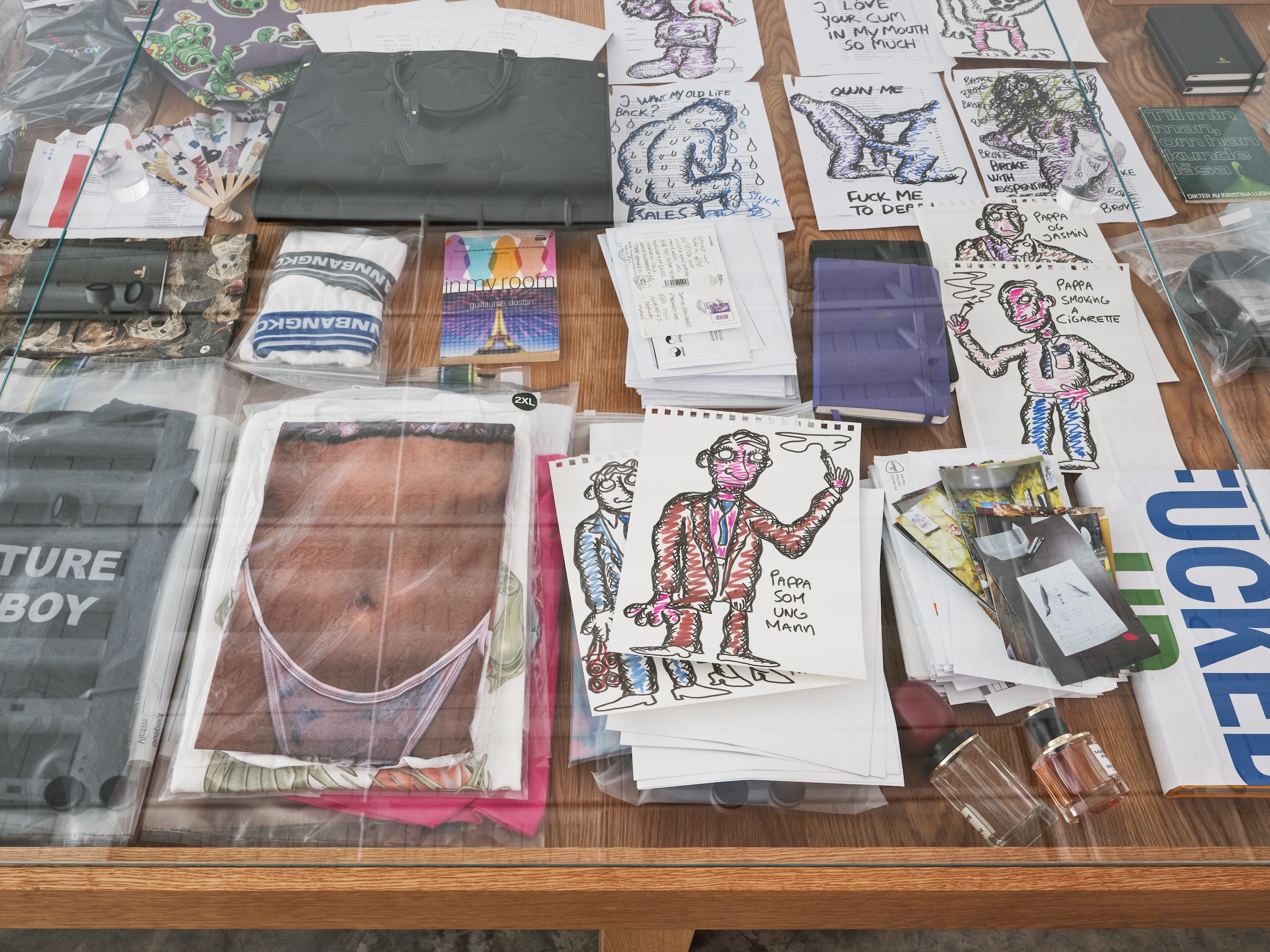
Installation view of Bjarne Melgaard’s ‘Barney Does It All’ at Faurschou New York. Photo by Olympia Shannon © Faurschou.
EISENMAN: That’s nothing. I don’t actually know what that is because I don’t know how much a kroner is.
MELGAARD: It’s about $6,000.
EISENMAN: I’m so sorry, Bjarne. This is a nightmare. I hope you can get detangled from it.
MELGAARD: But I wanted to ask you a question, Nicole. Is your work a reflection of you? Is it personal?
EISENMAN: All my work is really personal. Even the paintings that seem to be political allegories are actually personal allegories first. I like to look at my work and at paintings psychoanalytically.
MELGAARD: When you say psychoanalytically, can you say more specifically what you’re referring to? Are you like a Lacanian or something?
EISENMAN: Yeah sure, Lacan. Throw him in there. I remember in college reading a book by Leo Steinberg, which was a Freudian analysis of Rembrandt’s paintings. And my father’s an analyst, so I’ve always had this frame of thinking. I like knowing myself and my friends that way. The cause of things, the root of behaviors, I’ve always found that really interesting.
MELGAARD: My first meeting with your work was those wall paintings, right? I thought they were the coolest thing I ever saw. Was it called Trial Balloon?
EISENMAN: There was Trial Balloon, run by Nicola Tyson.
MELGAARD: There was also this other person that I was obsessed with called Siobhan Liddell.
EISENMAN: Yeah. She’s incredible, she’s still making gorgeous work. That was a cool scene, that was definitely in my heroin days. I had such a good time, skating on that edge of functionality. It never got really ugly for me. I was able to do it for about six years and then, when things started falling apart, I took myself to rehab with this grant.
MELGAARD: Are they wall paintings or are they frescoes?
EISENMAN: They’re India ink on the wall. If you paint the wall with a flat latex paint, the ink absorbs and it looks like fresco. It is a sort of poor man’s fresco, you could say.
MELGAARD: And how long would you spend painting one of those wall paintings?
EISENMAN: They were fast, a week or two. I would work around the clock. I did one at the Whitney where I was working all night, that was really drug-fueled. They’re not great paintings. I look at them now and I’m like, “Oh God…”
MELGAARD: They’re awesome.
EISENMAN: You don’t have this cringe factor? Some artists can look at everything they ever made and feel fine about it.
MELGAARD: I have this book with all my works and I can’t open it. One of the reasons I do shows is because I always think I’m finally going to make a good one. Looking back at my older work, I just find it painful.
EISENMAN: The past is a minefield.
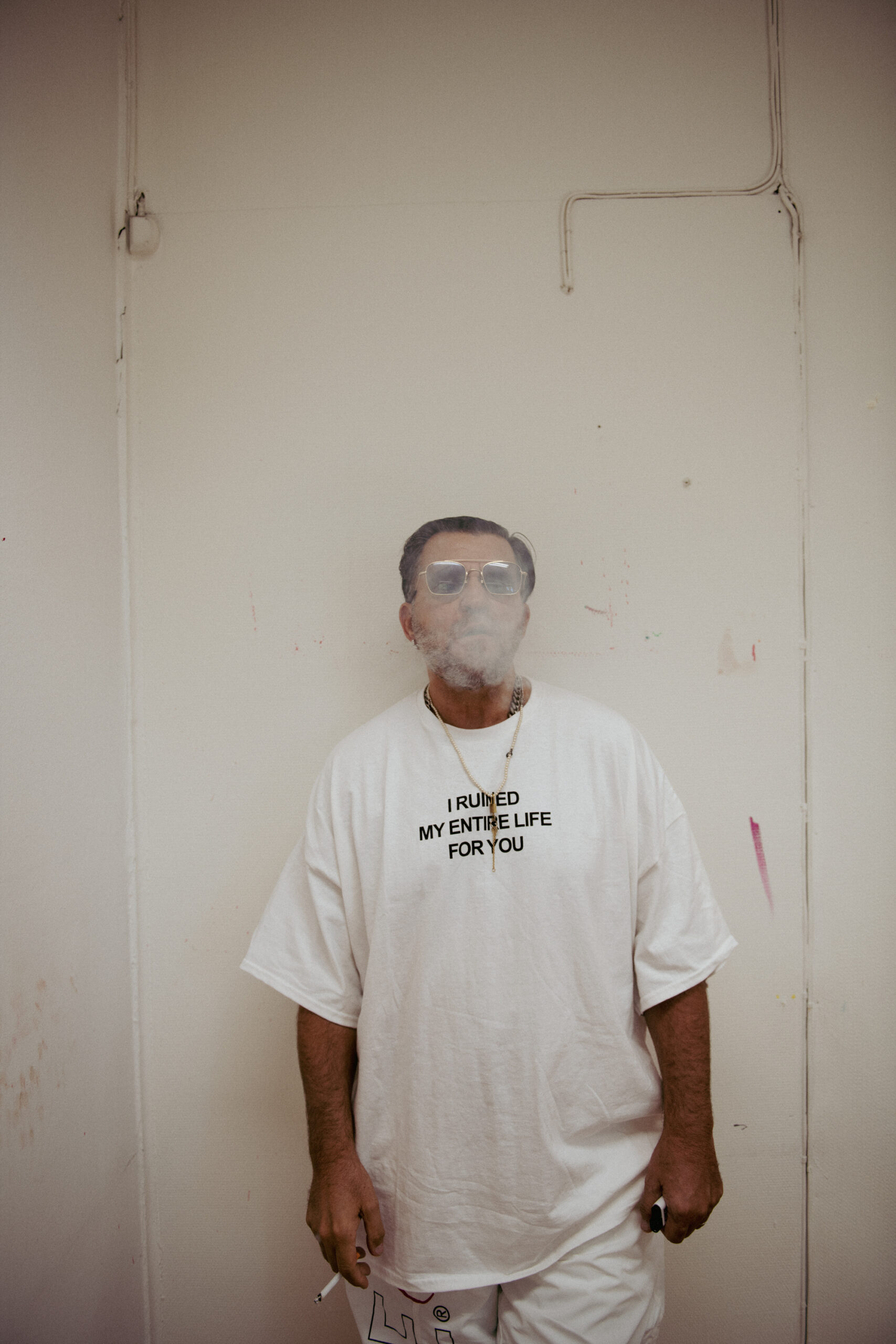
Bjarne Melgaard, photographed by Ivar Kvaal.

